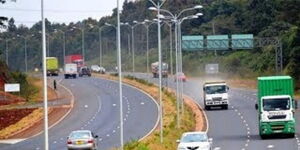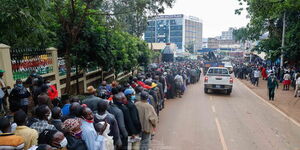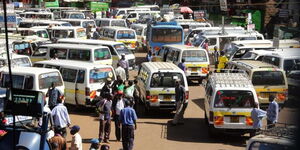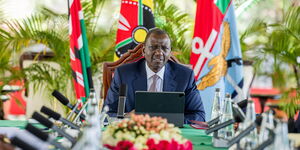Two counties that were previously ravaged by the locust menace are now locust free, Agriculture CS Peter Munya.
Speaking in Isiolo County, the CS revealed that intervention measures by the Ministry had borne fruit as the locusts in Isiolo and Meru counties had been neutralised.
"We are also almost eliminating them in Samburu County. Marsabit and Turkana Counties are also still affected but efforts are still undergoing to finish them," he added.
Watch the video courtesy of Daily Nation:
{"preview_thumbnail":"/files/styles/video_embed_wysiwyg_preview/public/video_thumbnails/fu9cIVcUG1w.jpg?itok=XGj-oh6D","video_url":"https://youtu.be/fu9cIVcUG1w","settings":{"responsive":1,"width":"854","height":"480","autoplay":0},"settings_summary":["Embedded Video (Responsive)."]}
He stated that the National Youth Service (NYS) together with the Ministry had embarked on spraying the insects that had destroyed hectares of farmland and threatened the nation's food security.
In April 2020, Food And Agriculture Organization (FAO) representative to Kenya Tobias Takavarasha warned of a second generation of desert locusts that could ravage East African countries with the second generation of locusts reportedly expected to be 20 times bigger than the first.
"The first generation of locusts is now breeding, they've laid their eggs, they will be hatching into nymph and hoppers, so this is the time to harness or control them before they start flying or before they start to affect the coming planting season," Takavarasha explained to Thomson Reuters Foundation News at the time.
Following the invasion, multiplication and spread of Desert Locust (DL), which precipitated a serious threat to food security and community livelihoods, CS Peter Munya on May 13 commissioned a Desert Locust Invasion Impact Assessment Exercise which was aimed at helping inform future interventions and recovery efforts.
CS Munya noted that the Government was deeply concerned about the welfare of those affected by the locust invasion and is keen on helping those who suffered losses to recover and regain their livelihood.
The Kenya Red Cross was mandated with conducting the survey of the impact of the desert Locust in 16 of the affected counties which will include ; Marsabit, Isiolo, Samburu, Mandera, Wajir, Garissa, Tana River, Turkana, Baringo, Elgeyo Marakwet, Laikipia, Kitui, Tharaka Nithi, Embu, Meru and Machakos.
In January, the United Nations confirmed the release of $10 million (Ksh1 billion) to support efforts aimed at combating the locust invasion that had ravaged parts of Kenya.
Kenya last experienced a locust invasion in 2007 but the situation was contained.












